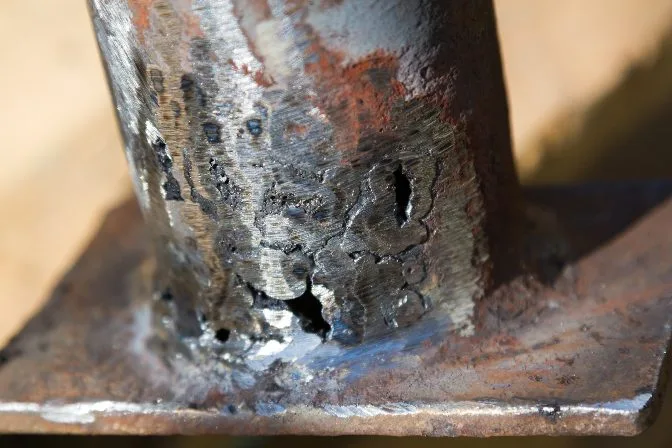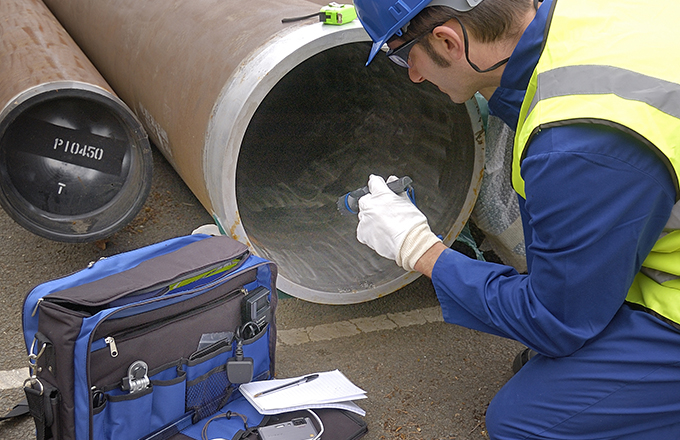Why Pick Specialist Welding Inspection Madison for Your Jobs
Why Pick Specialist Welding Inspection Madison for Your Jobs
Blog Article
Recognizing the Fundamentals of Welding Assessment to Ensure Quality and Security
In the world of modern-day design, welding examination stands as a foundation for making certain both the high quality and safety of structural developments. The procedure includes a careful evaluation of bonded joints, utilizing innovative methods such as radiographic and ultrasonic testing to discover hidden imperfections. The expertise of certified examiners is critical, as they bridge the void between academic criteria and practical application. Their duty extends beyond mere detection, incorporating the documentation and interaction of findings to relevant stakeholders. Yet, what are the nuances of these examination approaches that make them crucial for maintaining structural integrity?

Value of Welding Examination
In the world of industrial manufacture, the significance of welding inspection can not be overstated. Welding assessment plays a crucial duty in making sure the integrity, safety and security, and long life of bonded structures. Provided the diverse applications of welding in industries such as construction, automotive, aerospace, and shipbuilding, the requirement for rigorous top quality control steps is vital. Proper examination guarantees that welds satisfy specified requirements and codes, which is important for avoiding architectural failings that can cause catastrophic consequences.
The process of welding inherently entails intricate variables, consisting of temperature, material residential or commercial properties, and ecological problems, all of which can affect the top quality of the weld. A complete inspection determines problems such as splits, porosity, and incomplete combination, which can compromise the strength and dependability of the weld. By detecting these problems early, restorative activities can be taken, thus minimizing the risk of failure and connected costs.
Furthermore, welding assessment adds to regulative conformity, as several markets are governed by rigorous safety standards and guidelines. Failing to stick to these regulations can cause lawful responsibilities and monetary penalties. Ultimately, welding inspection not only safeguards physical frameworks yet also maintains and shields human lives industry online reputations.

Secret Welding Inspection Methods
Although welding inspection is important to guaranteeing the high quality and security of bonded structures, it is the particular techniques used that establish the effectiveness of the evaluation procedure. Secret welding inspection approaches can be broadly categorized into non-destructive screening (NDT) and harmful screening.
Ultrasonic and radiographic testing are advanced techniques that enable examiners to examine the inner honesty of the weld. Ultrasonic screening utilizes high-frequency acoustic waves to identify interruptions, while radiographic screening employs X-rays or gamma rays to create a photo of the weld's interior. Magnetic particle screening and fluid penetrant screening are surface examination methods made use of to locate surface and near-surface imperfections. In comparison, destructive testing methods include literally reducing the weld or breaking to evaluate its mechanical residential or commercial properties. These extensive inspection techniques make certain that welds fulfill sector requirements and safety needs, therefore making certain structural honesty and efficiency.
Role of Licensed Inspectors
Certified assessors play a pivotal function in the welding inspection process, guaranteeing that all welds adhere to rigorous market criteria and safety laws. Their know-how is crucial in recognizing issues or abnormalities that may jeopardize the structural integrity of a weld. By carefully examining each weld, licensed assessors aid avoid possible failings that can bring about hazardous accidents or expensive repair work.
To end up being qualified, inspectors have to undergo strenuous training and screening, which familiarizes them with various welding methods, materials, and screening methods. This comprehensive knowledge allows them to evaluate weld quality properly and make informed judgments about their safety and security and integrity. Furthermore, qualified assessors are efficient in translating requirements and plans, ensuring that the welding job aligns with the task's layout demands.
An essential component of their function is to document their findings completely, giving a detailed record of the inspection process. This documents recommended you read is essential for traceability and accountability, working as a main document of compliance with market criteria. Licensed inspectors additionally play a crucial function in facilitating interaction in between project stakeholders, supplying understandings and referrals to enhance welding methods and results. Their contribution is vital in keeping high levels of high quality and safety and security in welding operations.

Tools Utilized in Welding Inspection
Welding inspectors depend on a selection of specialized devices to execute their duties effectively, ensuring each weld meets the essential standards. Among these devices, visual assessment aids like amplifying glasses and mirrors are essential, permitting assessors to carefully examine welds for surface area problems such as splits, porosity, and undercut. Calipers and why not try here fillet weld evaluates are vital for determining weld dimensions to verify compliance with design requirements.
Advanced devices expand beyond visual aids, including non-destructive testing (NDT) equipment. Ultrasonic screening devices are essential in identifying subsurface flaws, making use of acoustic waves to expose interior interruptions without jeopardizing the weld's integrity. Radiographic screening employs X-rays or gamma rays to record images of a weld's interior, highlighting prospective flaws.
Magnetic bit screening is one more vital device, specifically for detecting surface area and near-surface stoppages in ferromagnetic products. By using ferrous fragments and magnetic fields, examiners can recognize imperfections that might otherwise be unseen.
Dye penetrant assessment is often utilized for non-ferrous products, providing a contrast-enhanced aesthetic look for surface-breaking defects. Welding Inspection Madison. Together, these devices enable welding examiners to thoroughly evaluate weld top quality, making sure security and dependability in different applications across industries
Ensuring Structural Integrity

Welding treatments need to abide by well established standards and codes, such as those specified by the American Welding Culture (AWS) or the International Company for Standardization (ISO) These guidelines make certain that the welds can hold up against operational stress and anxieties and environmental aspects. Certified and certified welders play a vital duty in this procedure, as try these out their know-how makes certain that methods are applied properly, lessening flaws such as splits, porosity, and insufficient combination.
Post-weld inspection is another important part of confirming structural honesty. Non-destructive testing (NDT) techniques, including ultrasonic testing and radiographic screening, are used to identify subsurface defects without compromising the bonded structure. These evaluations confirm that the welds fulfill the needed high quality standards, providing assurance of their toughness and integrity. Eventually, making certain structural honesty in welding not just safeguards human lives yet likewise safeguards financial investments and enhances the durability of engineered structures.
Final Thought
The basics of welding examination are vital for keeping the top quality and safety and security of bonded frameworks. By implementing key examination methods, such as aesthetic analyses and non-destructive testing, possible issues that can compromise structural stability are recognized. Certified examiners are essential in guaranteeing compliance with sector standards and reliable communication among stakeholders. Using specialized devices even more boosts the inspection process, ultimately protecting human lives and extending the life expectancy of welded building and constructions.
Welding evaluation plays a critical function in guaranteeing the honesty, safety, and long life of bonded structures.Although welding inspection is vital to making certain the high quality and safety of bonded structures, it is the details approaches utilized that figure out the performance of the inspection process. Secret welding inspection techniques can be generally categorized into non-destructive testing (NDT) and damaging screening.Qualified inspectors play a pivotal role in the welding examination process, making certain that all welds abide with rigorous industry criteria and security regulations.The principles of welding evaluation are essential for preserving the top quality and safety and security of welded frameworks.
Report this page